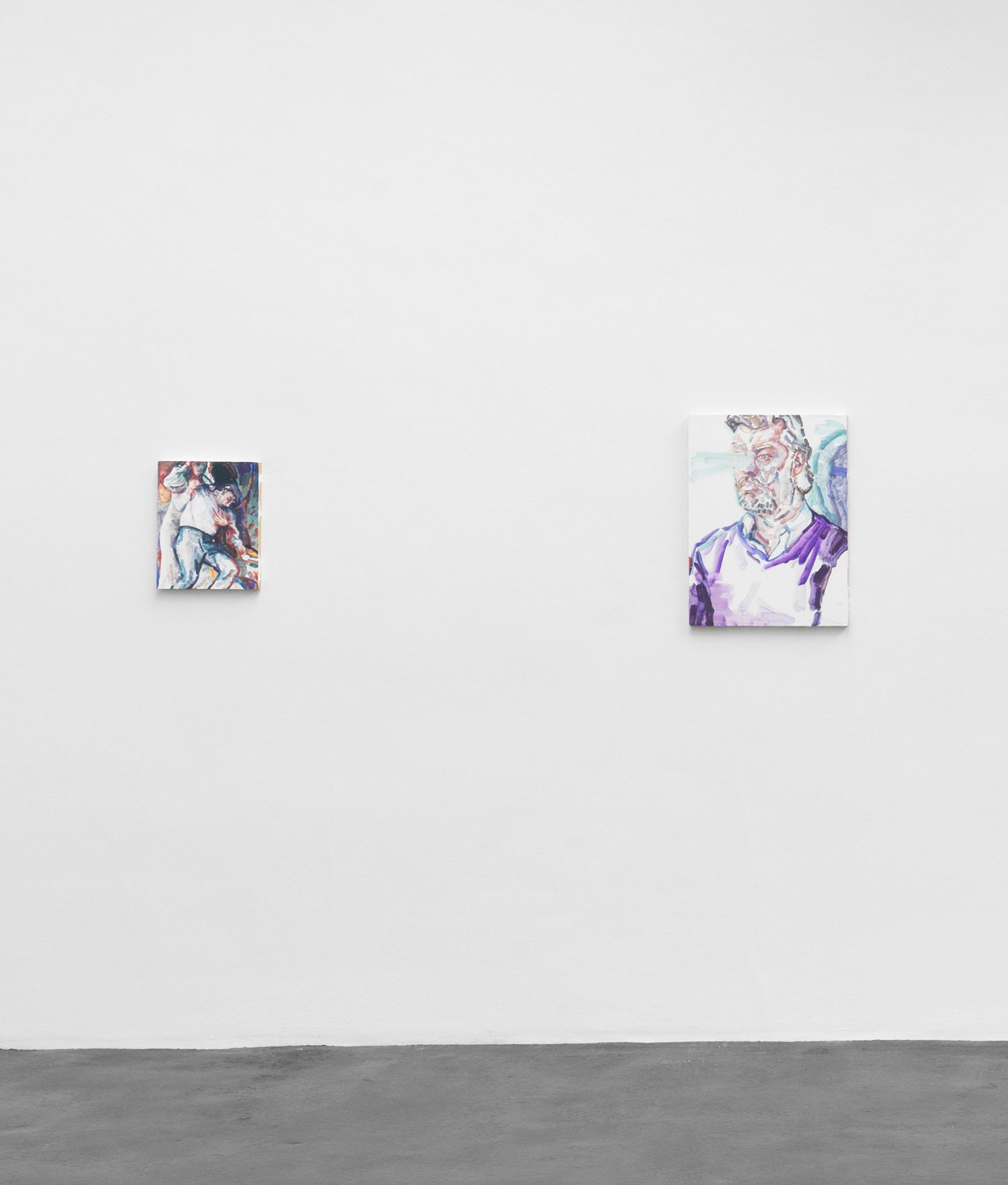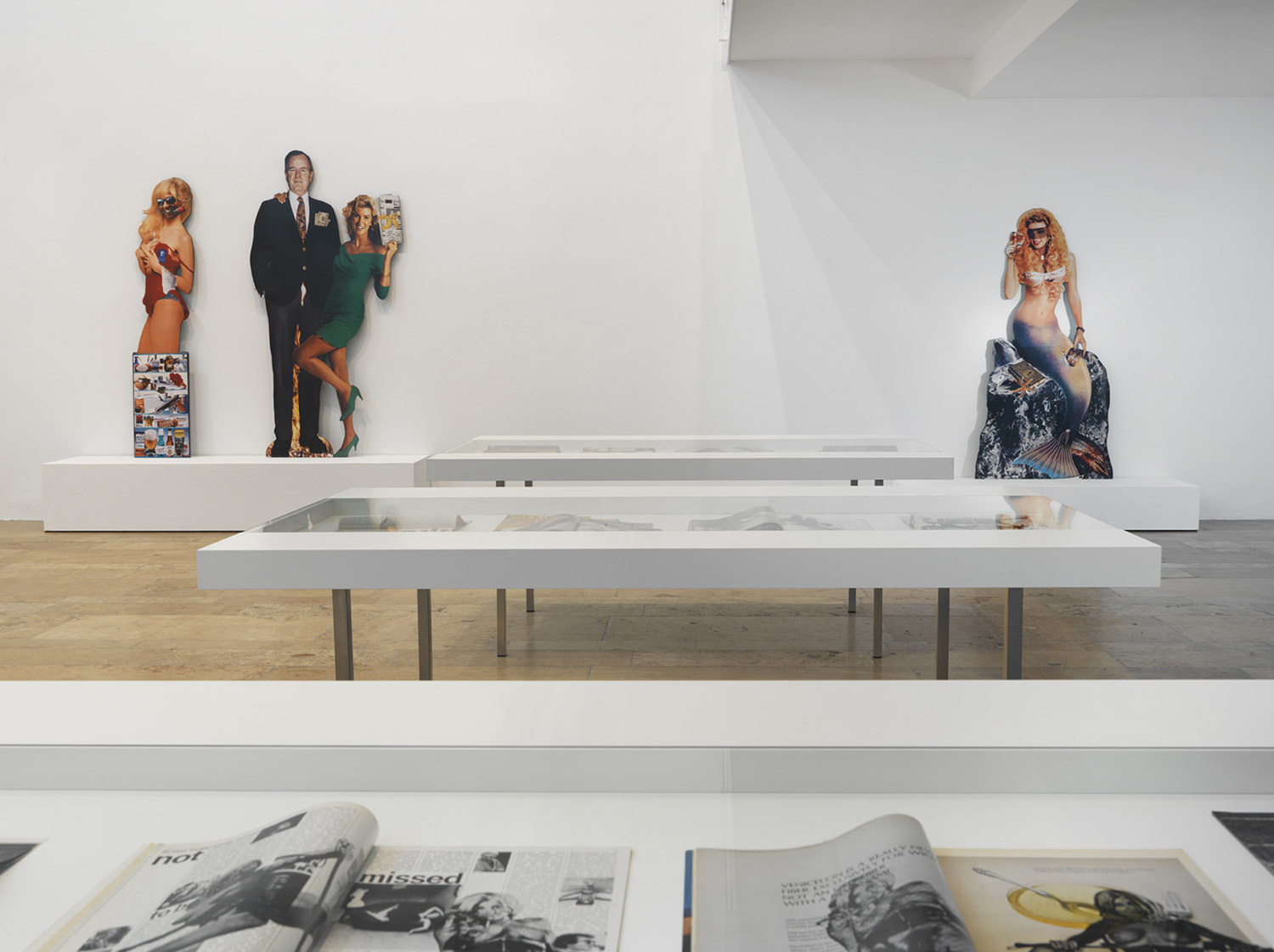Until now, Chilean conceptualist Eugenio Dittborn has not been the subject of a solo exhibition in Europe. This fact is particularly surprising considering that Dittborn’s “Airmail Paintings” have been posted by the artist to group exhibitions worldwide since the early 1980s. The overdue “Pinturas Aeropostales” at KOW, Berlin, chronicles Dittborn’s work from 1979 onward.
True to its title, the exhibition focuses on the eponymous “Airmail Paintings” — unmounted sections of paper or canvas collaged with screen prints sourced from historical print media. The works range in size from a single two-meter section of canvas to monumental. The exhibition’slargest work — The 27th History of the Human Face (Lejia) (2014) — pairs mugshots of Chilean criminals with naively drawn faces atop a watery gray ground. It sprawls over eighteensections of canvas on the gallery’s longest wall.
Each of these sections was folded, packed into its own artist-designed shipping envelope and mailed from Dittborn’s home in Santiago to KOW. The envelopes accompany each “Airmail Painting,” and viewers are encouraged to leaf through them. Each piece’s exhibition history is noted alongsidecongratulatory quotes about the body of work by artists and critics. Dittborn’s unwavering adherence to this format is meaningful when one considers the moment of its conception. The first “Airmail Paintings” date from 1983 — less than a decade after a military coup installed General Augusto Pinochet Ugarte as Chile’s autocratic dictator, ushering in an era marked by the violent throttling of political dissent. The “Airmail Paintings” were a small transgression and a means of escape.
Dittborn’s imagery constitutes a pictographic dictionary of society under censorship and oppression. Colonial etchings, tabloid clippings and simple line drawings of houses are united by the fact that all belonged to mass media prior to their redeployment by the artist, whether noticed or not. The resultant ease of Dittborn’s selections illustrate how easily images can be muted amid the surplus of visual information that surrounds us. While Chile is no longer subjugated by dictatorship, the “Airmail Paintings” speak to a more abstract global inequity in which voices of opposition are quieted by a new hegemony, one without a figurehead.
The portrait ofJemmy Button — a native Fuegian who was purchased by an English naval officer for a mother of pearl button — crops up again and again in Dittborn’s fragmented narrative of suppression and resistance. Known as Orundellico until his capture, Button was renamed and taken to Europe in 1830. After a number of years he came back to South America — one of many references to unexpected return in Dittborn’s lexicon. That Button is surrounded by droves of other faces — most unrecognizable — serves as a reminder that history isindeed mutable but never wholly erasable. Some stories take decades to unearth. Others remain buried for centuries. Still, one never knows what might show up in the mail.




